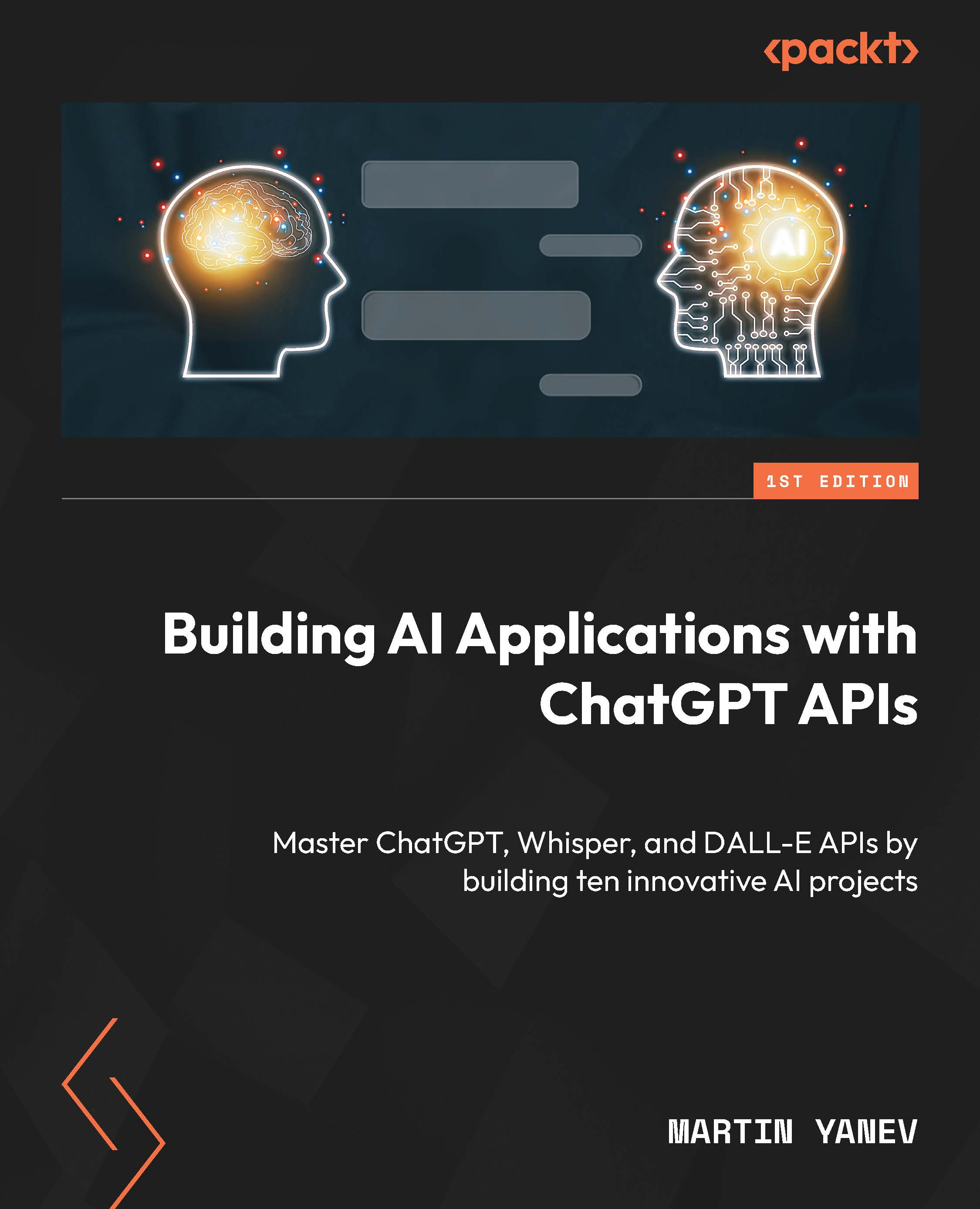-
Book Overview & Buying

-
Table Of Contents

Building AI Applications with ChatGPT APIs
By :

 Sign In
Start Free Trial
Sign In
Start Free Trial

The first application in this chapter and in this book is going to be a ChatGPT clone that utilizes OpenAI’s powerful language model to generate human-like responses to user input. The application will be built using Flask, a lightweight web framework for Python, and will feature a simple and elegant frontend interface for users to interact with. With just a few lines of code, users will be able to input their text and receive a response generated by the OpenAI language model. Specifically, the application will be able to do the following:
The clone app will be able to take in a user’s input, send it to OpenAI’s API, and receive a response, which will be displayed to the user in real time. The app will be...
